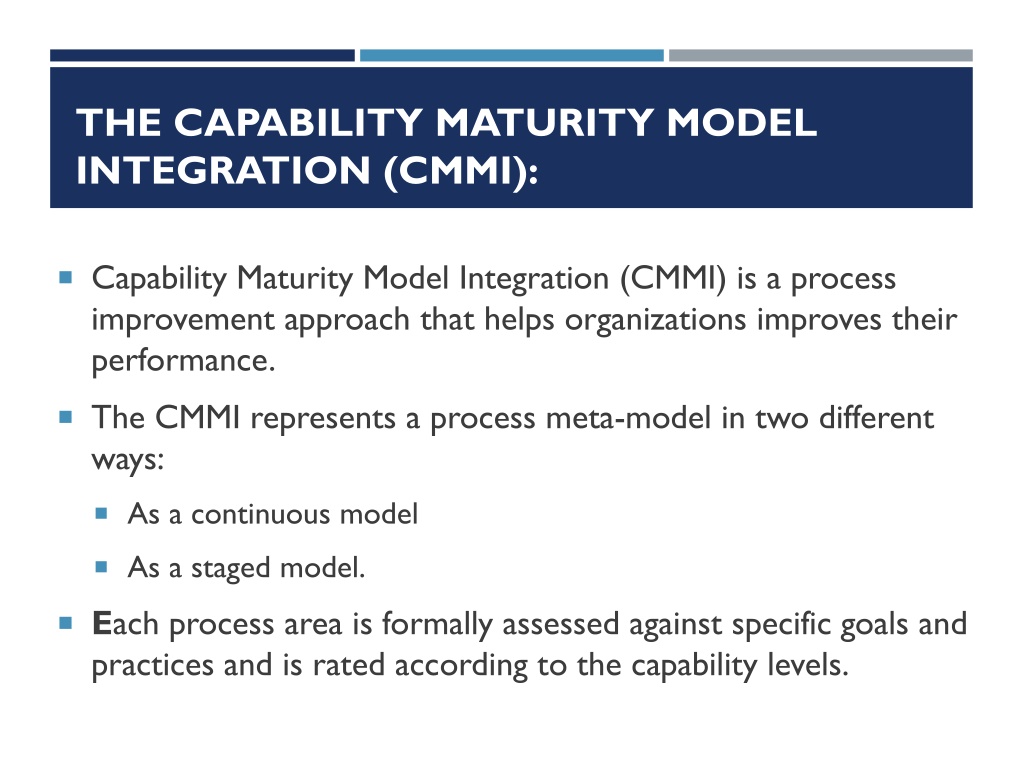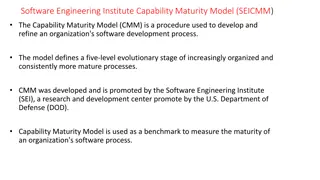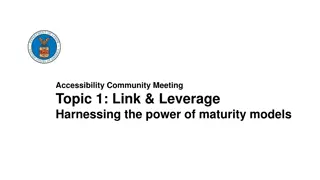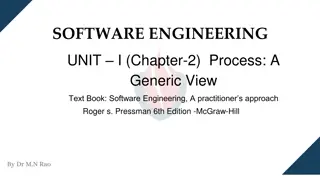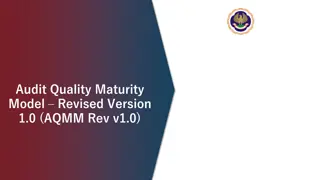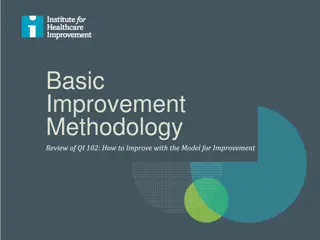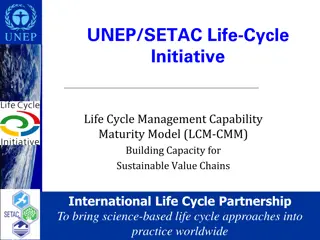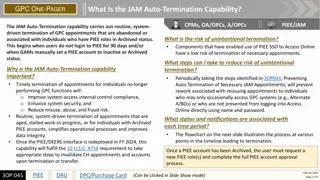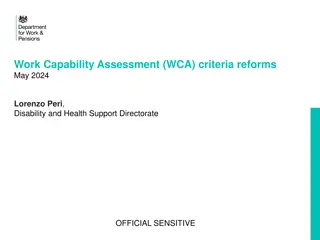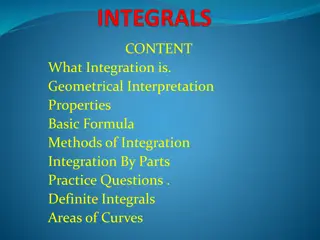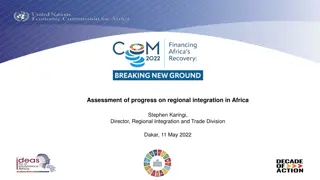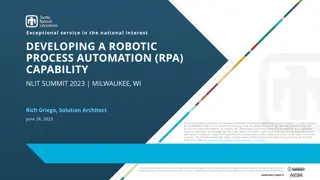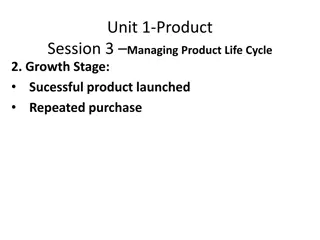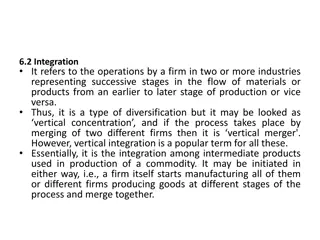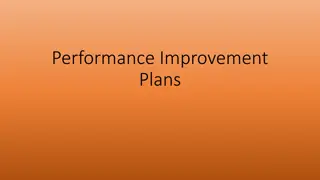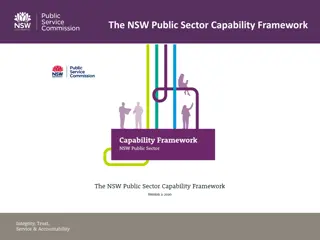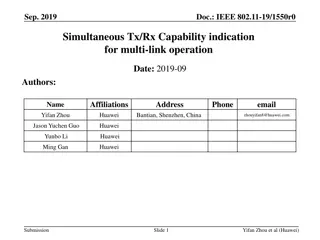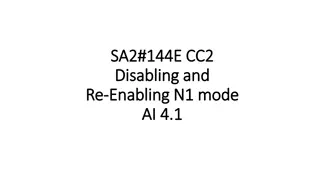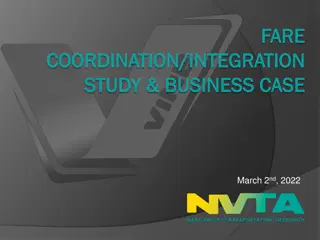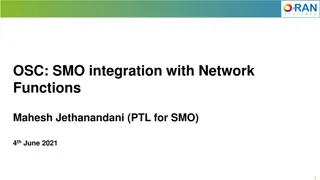Understanding the Capability Maturity Model Integration (CMMI) for Process Improvement
Capability Maturity Model Integration (CMMI) is a framework that aids organizations in enhancing performance by assessing process maturity levels. It offers continuous and staged models for process improvement, with each level representing specific goals and practices. By following CMMI, organizations can achieve greater alignment, standardization, and optimization in their processes, ultimately leading to improved efficiency and quality.
Download Presentation

Please find below an Image/Link to download the presentation.
The content on the website is provided AS IS for your information and personal use only. It may not be sold, licensed, or shared on other websites without obtaining consent from the author. Download presentation by click this link. If you encounter any issues during the download, it is possible that the publisher has removed the file from their server.
E N D
Presentation Transcript
THE CAPABILITY MATURITY MODEL INTEGRATION (CMMI): Capability Maturity Model Integration (CMMI) is a process improvement approach that helps organizations improves their performance. The CMMI represents a process meta-model in two different ways: As a continuous model As a staged model. Each process area is formally assessed against specific goals and practices and is rated according to the capability levels.
THE CAPABILITY MATURITY MODEL INTEGRATION (CMMI): WHY WE CHOSE CMM CMM today serves as a seal of approval in software development CMM helped guide us towards standard, repeatable processes reduced learning time on how to get things done Standard practices mean time savings to our team - everyone knows what to expect and what to deliver. Our quality activities became more aligned within the project rather than thought of as a separate event. We rely on our processes and our people together, not just one or the other Ideas in CMMI creates an environment of improvement if you don t like things one way, make it better!
THE CAPABILITY MATURITY MODEL INTEGRATION (CMMI): Level 0: Incomplete. The process area is either not performed or does not achieve all goals and objectives defined by CMMI for level 1 capability. Level 1: Performed. All of the specific goals of the process area have been satisfied. Work tasks required to produce defined work products are being conducted. Level 2: Managed. All level 1 criteria have been satisfied. In addition, all work process area conforms to an defined policy; all people doing the work have access to adequate resources to get the job done; stakeholders are actively involved; all work tasks and work products are monitored, controlled, and reviewed;
THE CAPABILITY MATURITY MODEL INTEGRATION (CMMI): Level 3: Defined. All level 2 criteria have been achieved. In addition, the process is tailored from the organizations set of standard processes according to the organizations tailoring guidelines, and contributes and work products, measures and other process-improvement information to the organizational process assets . Level 4: Quantitatively managed. All level 3 criteria have been achieved. In addition, the process area is controlled and improved using measurement and quantitative assessment. Quantitative objectives for quality and process performance are established and used as criteria in managing the process Level 5: Optimized. All level 4 criteria have been achieved. In addition, the process area is adapted and optimized using quantitative means to meet changing customer needs and to continually improve the efficacy of the process area under consideration
PERSONAL AND TEAM PROCESS MODELS The best software process is one that is close to the people who will be doing the work. Each software engineer would create a process that best fits his or her needs, and at the same time meets the broader needs of the team and the organization. Alternatively, the team itself would create its own process, and at the same time meet the narrower needs of individuals and the broader needs of the organization.
PERSONAL AND TEAM PROCESS MODELS The quality of a software system is determined by the quality of its worst components. The quality of a software component is governed by the individual who developed it. The quality of a software component is governed by the quality of the process used to develop it. The key to quality is the individual developer s skill, commitment, and personal process discipline.
PERSONAL AND TEAM PROCESS MODELS As a software professional, you are responsible for your personal process. You should measure, track, and analyze your work. You should learn from your performance variations. You should incorporate lessons learned into your personal practices.
PERSONAL SOFTWARE PROCESS (PSP) The personal software process (PSP) emphasizes personal measurement of both the work product that is produced and the resultant quality of the work product. The PSP process model defines five framework activities: planning, high-level design, high level design review, Development and postmortem.
PERSONAL SOFTWARE PROCESS (PSP) Planning: This activity isolates requirements and, base on these develops both size and resource estimates. In addition, a defect estimate is made. All metrics are recorded on worksheets or templates. Finally, development tasks are identified and a project schedule is created. High level design: External specifications for each component to be constructed are developed and a component design is created. Prototypes are built when uncertainty exists. All issues are recorded and tracked. High level design review: Formal verification methods are applied to uncover errors in the design. Metrics are maintained for all important tasks and work results.
PERSONAL SOFTWARE PROCESS (PSP) Development: The component level design is refined and reviewed. Code is generated, reviewed, compiled, and tested. Metrics are maintained for all important task and work results. Postmortem: Using the measures and metrics collected the effectiveness of the process is determined. Measures and metrics should provide guidance for modifying the process to improve its effectiveness. PSP stresses the software engineer to identify errors early and, as important, to understand the types of errors that he is likely to make. PSP represents a disciplined, metrics-based approach to software engineering.
TEAM SOFTWARE PROCESS (TSP) The goal of TSP is to build a self-directed project team to produce high-quality software. The following are the objectives for TSP: Build self-directed teams that plan and track their work, establish goals, and own their processes and plans. These can be pure software teams or integrated product teams(IPT) of 3 to about 20 engineers. Show managers how to coach and motivate their teams and how to help them sustain peak performance. Accelerate software process Provide improvement guidance to high-maturity organizations.
TEAM SOFTWARE PROCESS (TSP) A self-directed team defines - roles and responsibilities for each team member - tracks quantitative project data - identifies a team process appropriate for project - a strategy for implementing the process - defines local standards that are applicable to the teams software engineering work; - continually assesses risk and reacts to it - Tracks, manages, and reports project status.
TEAM SOFTWARE PROCESS (TSP) TSP defines the following framework activities: Project launch, high-level design, implementation, integration and test, and postmortem. TSP makes use of a wide variety of scripts, forms, and standards that serve to guide team members in their work. Scripts define specific process activities and other more detailed work functions that are part of the team process.
TEAM SOFTWARE PROCESS (TSP) Each project is launched using a sequence of tasks. The following launch script is recommended Review project objectives with management and agree on and document team goals. Establish team roles Define the teams development process Make a quality plan and set quality targets Plan for the needed support facilities
